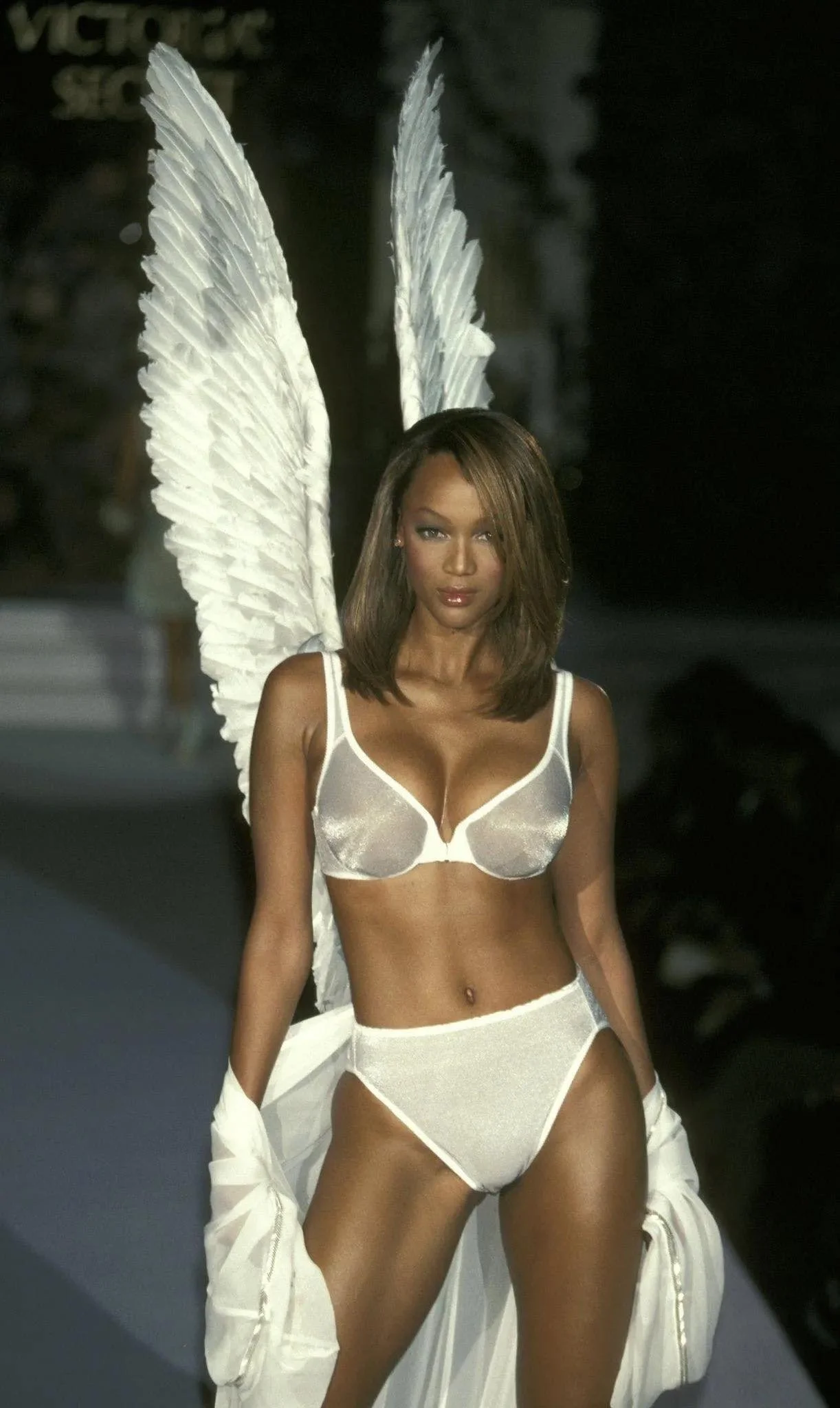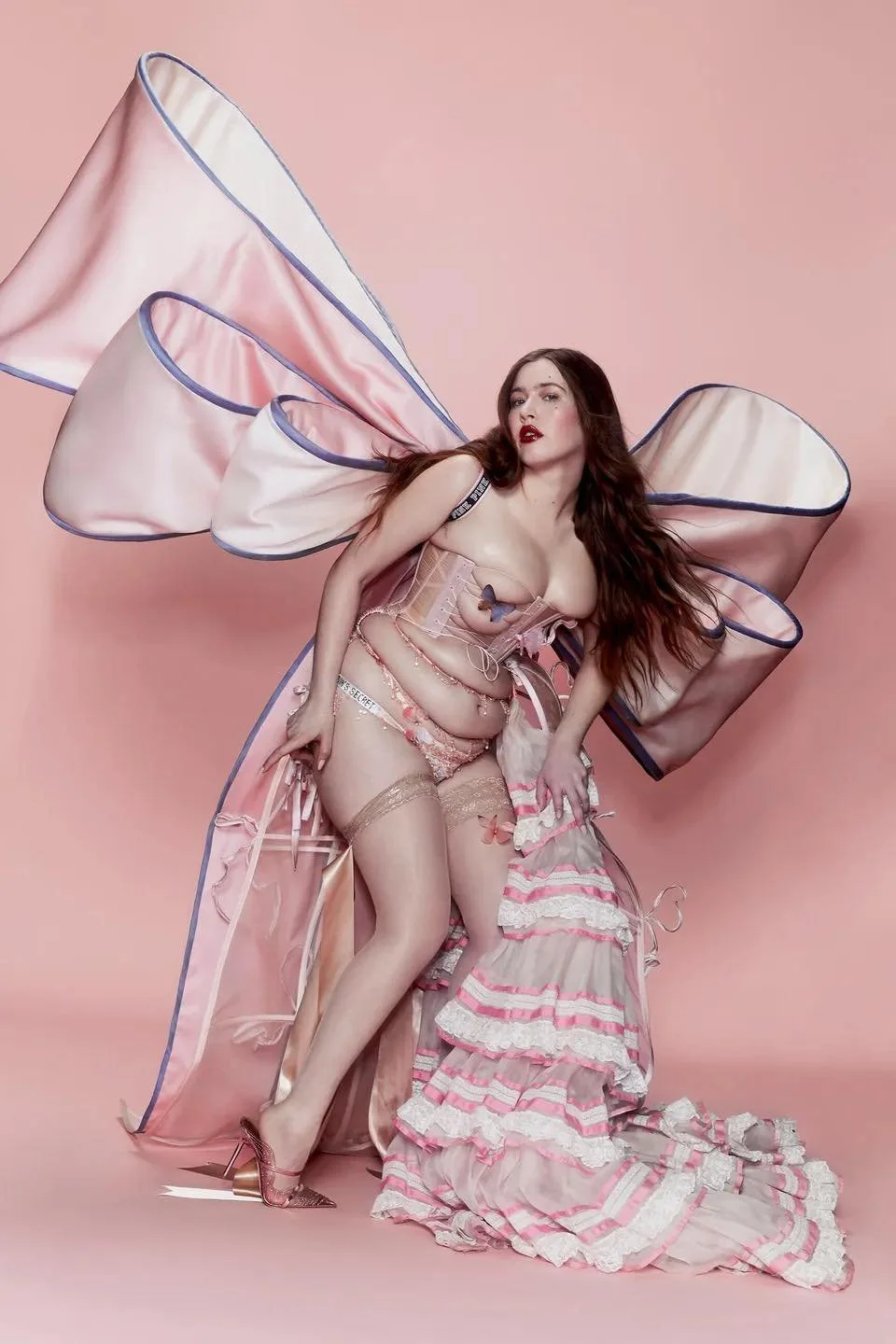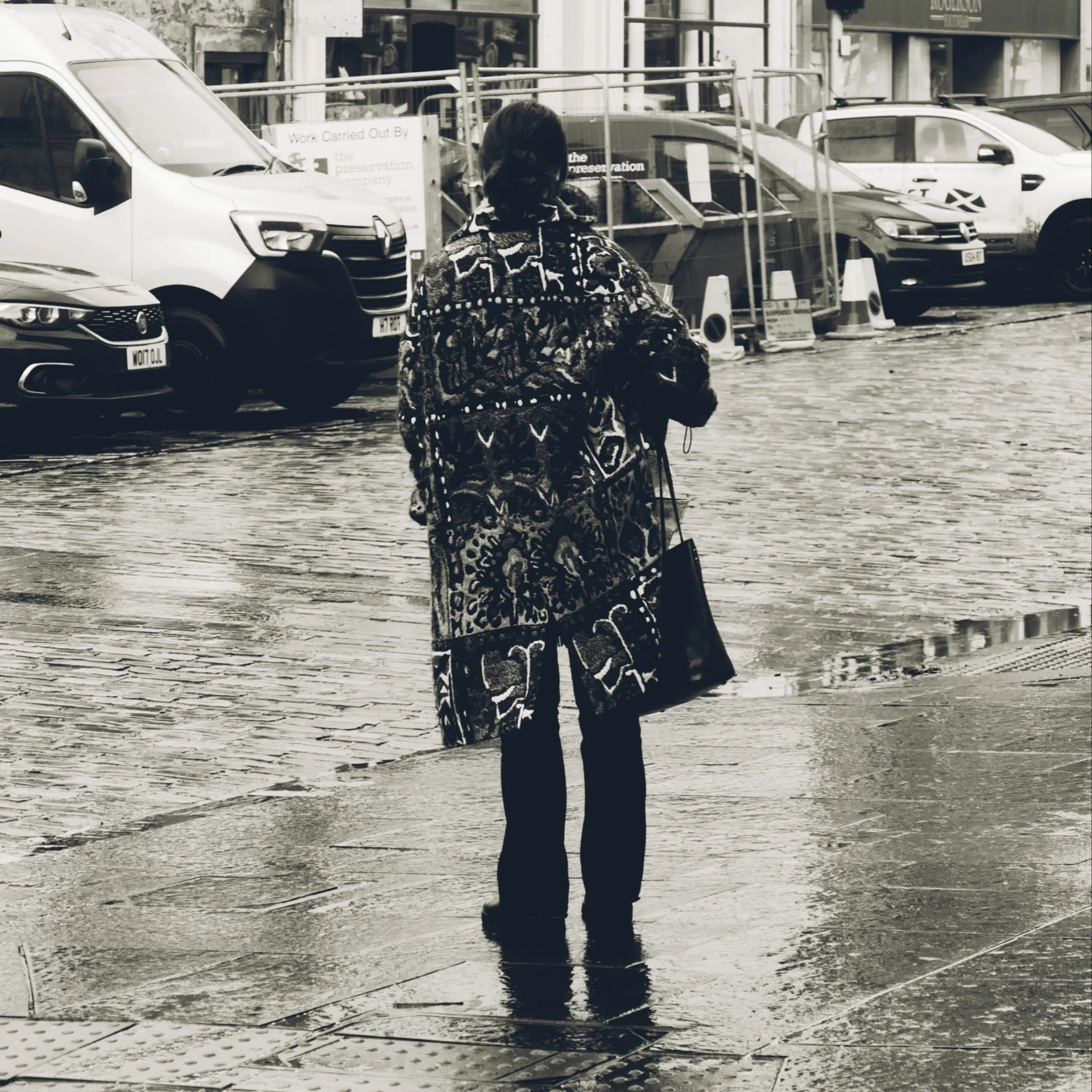The Demon Behind the Victoria’s Secret Angels
Words by Hebe Bower-Morris, Writer; Images by James Issberner, Photographer
TW: unrealistic body standards
Throughout the history of fashion, women’s bodies have often been the canvas of male ideologies and designs, as even today the industry is hyper male-dominated: of the top 50 fashion houses in the world, only 14% of them are run by female executives. The projection of beauty standards is something well-known within the fashion industry and is particularly prevalent within the Victoria’s Secret runway shows, especially with the infamous angels.
The Victoria’s Secret ‘Angels’ are a group of models, chosen for the certain aesthetic most of us are familiar with: the ultra-thin, top-standard female beauty and for decades, the image that we and those who came before us ‘should’ aspire to look like. This wasn’t simply a fad of the times when Victoria’s Secret became popular, it was simply too hard to miss with larger-than-life window displays in every shopping centre, advertisements in almost every catalogue and suddenly their logo embroidered onto clothing which everyone seemed to be wearing. In this sense, their advertising was top-tier as it took the world by storm in mere months.
This fire set beneath the company was hugely due to the Angels themselves, as they were not simply ordinary people; the angels consisted of names such as Heidi Klum, Tyra Banks, Gisele Bündchen, and more recently Bella Hadid and Kendall Jenner. With these names being the faces of the up-and-coming brand, it is not hard to see why everyone suddenly flocked to Victoria’s Secret. In a way, it was genius, these were not “ordinary” clothes; if you bought items from VS you were aligning yourself with these globally known, unattainable models.
All these models had something in common: their bodies, which perpetuated the universal idea of beauty itself, and following this standard, there remains much negativity surrounding the Angels. The models chosen were primarily white, tall, extremely thin yet curvy enough to meet the ‘hourglass figure’ and there were simply no tattoos or piercings allowed, making this image instantly a recognisable part of the brand.
The standards only got worse from here, with former CEO Cindy Fedus-Fields noting that Victoria’s Secret’s owner Les, pointed out that models shown in Playboy magazine have no freckles or moles. These impossible standards are said to be able to fit less than 1% of women (Hafeez, PsyD), being at least 5,9 in height, weighing no more than 120 pounds, and often obtaining surgical enhancements.
Once Victoria’s Secret launched its Pink line, marketed at pre-teen and teenage girls, it was apparent how problematic this was getting, and yet Victoria’s Secret was still at the forefront of beauty standards and trends in the 2000s and 2010s. It is evident, looking back, to see the negative implications this would lead to, not only for the public themselves, but for the models having such dangerous working conditions including constant weigh-ins and body measuring.
It took time for the world to recognise the negativity that Victoria’s Secret was perpetuating throughout their advertising and to their own models (even creating ‘train like an Angel’ workout routines) but at the time consumers believed they were being shown models to aspire to in a ‘dream’ life style. But it eventually became clear that VS was doing the complete opposite, making women feel bad about themselves, which is what almost every other brand was seeking to do as well as was the trend at the time.
This begs the question of what Victoria’s Secret is doing now and how is it still running in the world today, given a worldwide focus on positive body image and mental health. There has been much debate and back and forth on this very topic: 2018 was the year the brand turned away from the ‘traditional’ feminine standards towards diversity and inclusivity. However, chief marketing officer Ed Razek objected to casting different-sized women as well as trans women, stating ‘No, I don’t think we should’ and when asked why: ‘Because the show is a fantasy’. Now this quote comes with many evident issues and problems, as a ’fantasy’ as Razek puts it should be enjoyed by all people instead of simply stereotypically ‘pretty and thin’ women and girls. When this quotation became public the brand was forced to release an apology, but to little avail as the annual VS Show was then cancelled.
Since then, the brand has been on a noticeable decline as it receives more backlash, as what the brand is ‘known’ for is no longer acceptable within our society. To try and help their cause, Victoria’s Secret approached Michaela Stark to ‘reimagine’ the lingerie company. Stark is known for body morphing corsetry and fashion designed to accentuate your own unique curves and features. Stark told Paper magazine that every extra detail on her garments, each corset or tutu or ribbon placement is directly made to emphasise and show off different parts of the body which aren’t normally highlighted in the fashion world.
In this sense, Victoria’s Secret took a complete U-turn when asking Stark to become part of the brand. Stark took this occasion to turn the aesthetic of the classic ‘angels’ on its axis, transforming it into something the world was perhaps not ready for. As Vogue writer, Hannah Jackson, put it: “The Internet wasn’t ready for it”.
Whether or not this is the case, Stark pushed the boundaries of what was expected of a Victoria’s Secret ‘Angel’, creating avant-garde custom couture looks for herself and new angels including oversized bows in place of where the old VS wings would have been. Throwing out the wings was a risky choice for Stark as the Angels are depicted visually through just that, their wings. So while the brand was in desperate need of a helping hand, I think replacing it with such a large bow perhaps sends the wrong message. Instead of creating the ‘perfect’ image for women to compare themselves to, it appears too close to portraying women as objects, even as gifts. While I appreciate Stark focusing on wanting to show self-love and appreciation for ‘normal’ bodies by using tight-laced corsets and ribbons to contort the body in an overflowing state, I think discontinuing the wings was a step too far for the brand.
Stark created a hyperbolic version of the female body encompassing discomfort as the tight ribbons and fabrics to fit into the illusion created by society, and so, by creating these pieces where the body is pushed out of its comfort zone both emotionally and physically, it highlights these extreme pressures placed on women within the fashion industry (particularly models). And so, being able to capture this unique feeling, not only privately but on one of the largest public forums known worldwide, the Victoria’s Secret Fashion Show.
Though perhaps, Jackson is right, the internet might not have been ready for such a change for the global brand, it’s a push in the right direction and I’m very interested to see what happens next to Victoria’s Secret and how they redesign their brand to be acceptable in 2023.
Inspired by Stark and the celebration of each individual body I asked James Issberner, one of our amazing photographers to go around St Andrews taking candid shots. Whenever I walk around town I always notice individuals who come across as so authentically themselves that it becomes beautiful and encouraging just like Stark's new concept for Victoria’s Secret.







